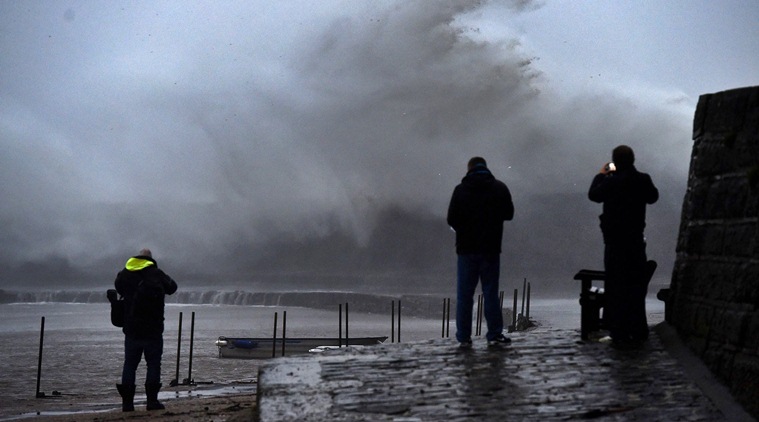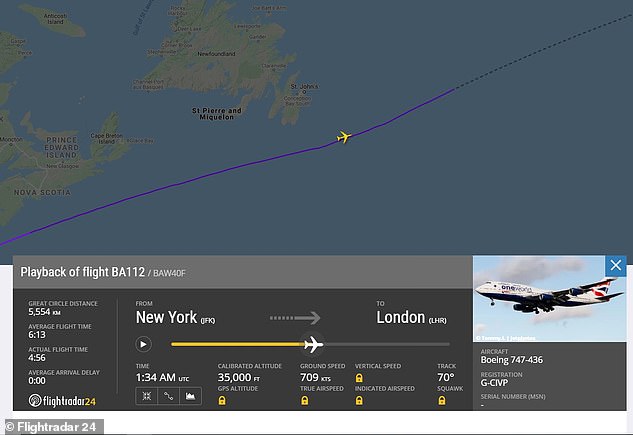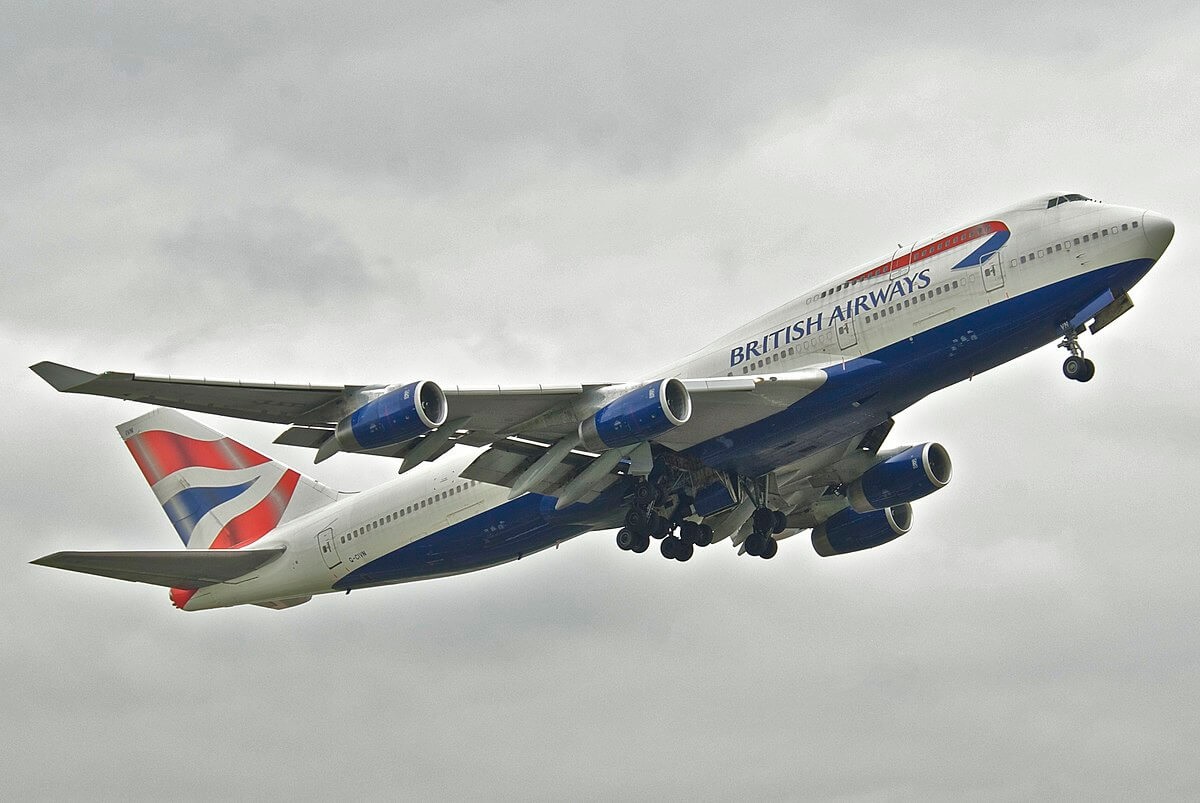Over the weekend, we have witnessed the fastest subsonic transatlantic flight with British Airways flight BA112 from New York to London helped by fierce storm Caira that battered the West Europe.
The Boeing 747-436 reached speeds of 825 mph (1,327 km/h) as it rode a jet stream accelerated by Storm Ciara. The flight took 4 hours and 56 minutes flight and arrived at Heathrow Airport 80 minutes ahead of schedule on Sunday morning. A typical transatlantic flight on this route takes around six hours and 13 minutes.

LYME REGIS, ENGLAND, – FEBRUARY 09: Storm Ciara arrives with waves hitting the Cobb on February 09, 2020 in Lyme Regis, United Kingdom. Amber weather warnings are in place as gusts of up to 90mph and heavy rain sweep across the UK with travellers facing disruption from Storm Ciara. (Photo by Finnbarr Webster/Getty Images)
According to Flightradar24, an online flight tracking service, it beat a previous five hours 13 minutes record held by Norwegian.
Even though the BA flight was faster than the speed of sound — 1,234 kph (767 mph) — as it was using a stream of air to push forward it did not breach the sound barrier. It is deemed subsonic as it was traveling more slowly than the speed of sound relative to the air around it.

SAFETY
British Airways spokesperson said: “We always prioritise safety over speed records.
“Our highly-trained pilots made the most of the conditions to get customers back to London well ahead of time.”
The fastest transatlantic crossing belongs to BA Concorde, which flew from New York to London in two hours 52 minutes and 59 seconds in 1996 – hitting a top speed of 1,350 mph (2172 km/h).
HOW DOES WIND HELP YOU FLY FASTER?
By taking advantage of a particularly vigorous tailwind called also jet stream, a current of air rushing from west to east, across the Atlantic the aircraft gains extra speed relative to the ground and crosses the Atlantic faster.
Tailwinds make travel faster and save fuel and in transatlantic flights its in direction from the west to the east usually making trip shorter when passengers are flying from USA to Europe. However due to the Storm Caira, tailwind speeds exceeded over 200 mph (321 km/h) that aided BA112 flight to break the record for the fastest subsonic transatlantic flight.
How these jet streams work and why east-bound flights are faster and west-bound flights longer watch on this video:







